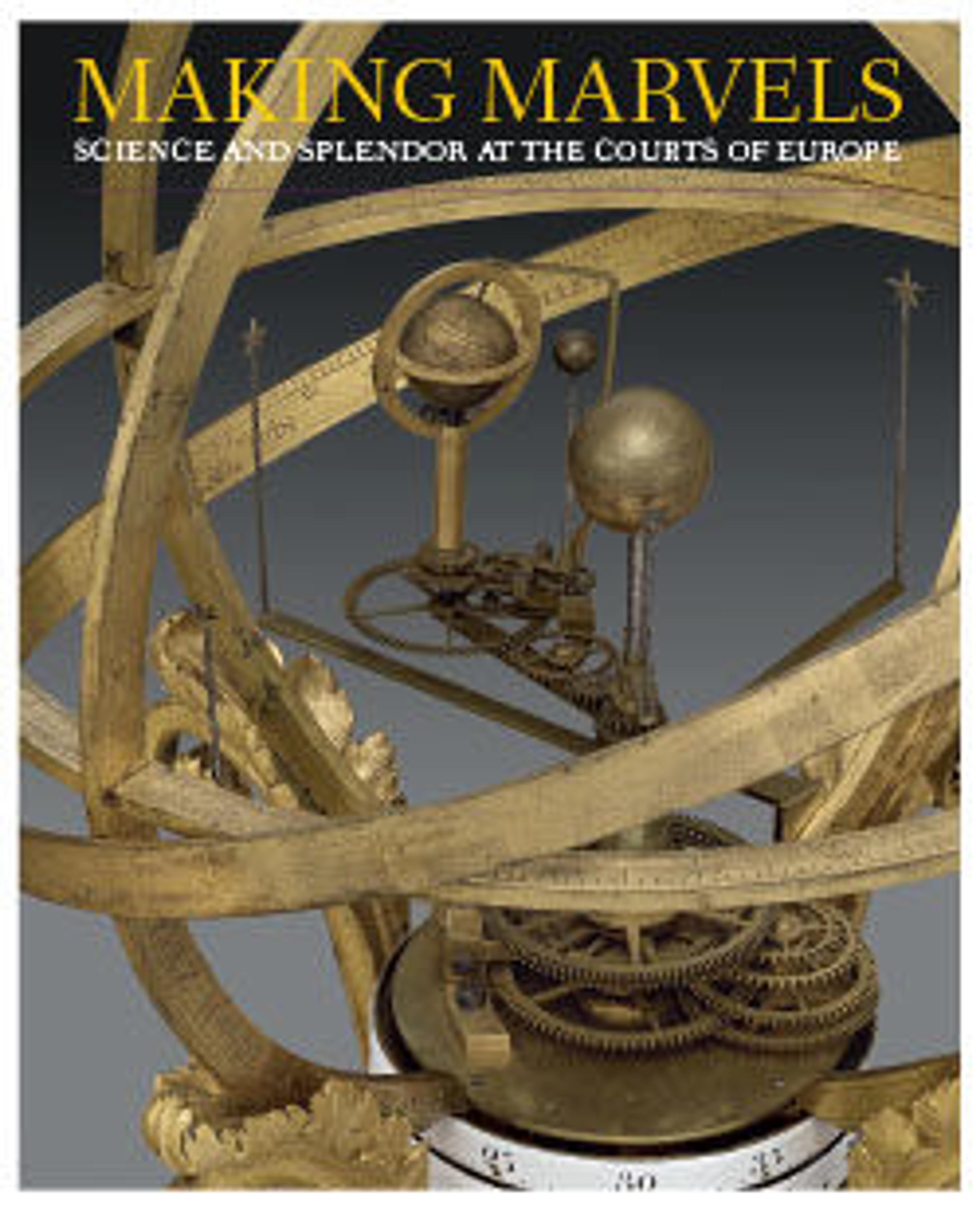Goa Stone and Gold Case
The egg-shaped gold container enclosing this stone consists of hemispherical halves, each covered with a layer of pierced, chased, and chiseled gold foliate openwork. An arabesque surface pattern is overlaid with an ogival trellis containing a variety of beasts, some highly Europeanized, including unicorns and griffins. The source of these images is likely to have come to Goa through the Portuguese and may also reflect a particular European patron. (This example was brought to England in the eighteenth century by a British officer in the East India Company.)
Artwork Details
- Title: Goa Stone and Gold Case
- Date: late 17th–early 18th century
- Geography: Probably made in India, Goa
- Medium: Container: gold; pierced, repoussé, with cast legs and finials
Goa stone: compound of organic and inorganic materials - Dimensions: Goa stone:
Diam. 1 3/16 in. (3 cm)
Container:
H. 2 5/8 in. (6.7 cm)
Diam. 5 11/16 in. (14.4 cm) - Classification: Metal
- Credit Line: Rogers Fund, 2004
- Object Number: 2004.244a–d
- Curatorial Department: Islamic Art
Audio
6729. Goa Stone and Gold Case
NAVINA HAIDAR: I'm Navina Haidar. I'm a curator in the Islamic department. One of the most extraordinary objects on view in this gallery is the Goa stone in its gold holder. And this is a very mysterious, powerful object. ….Because contained within this oval container was a large stone which is made of a composite of many different elements, including ivory, bone, different types of organic and inorganic materials, including crushed gems. And it was believed at the time that ingesting small parts of this Goa stone would be very good for your health and also an antidote to poisoning, which was, unfortunately, sometimes practiced at the time. The container… is a tour de force of goldwork… The oval container is covered with three layers of gold carving and work: an inside arabesque covered with a kind of a trellis.... And then within the cartouches of this trellis is a whole series of… figures of animals. And if you look closely, you can see monkeys, squirrels, griffins, unicorns; a whole variety of animal figures that clearly have European links as well... There is a strong Indian element as well. …The three-footed stand; this tradition of having three feet is something that's seen in metalwork of southern India. And the whole thing is surmounted by a very Indian-looking bird, which is a bit of a fantastical bird. It's not quite a peacock and it's not quite a bird of prey, but it looks like a combination of the two. Goa stones…are known as Goa stones because they were most likely produced along the western coast of India, and… their production is associated with Jesuits, who are based…in the Goa area and exported sometimes through longstanding links with Portuguese traders and other European merchants who… could easily take these to clients in Europe.
Listen to more about this artwork
More Artwork
Research Resources
The Met provides unparalleled resources for research and welcomes an international community of students and scholars. The Met's Open Access API is where creators and researchers can connect to the The Met collection. Open Access data and public domain images are available for unrestricted commercial and noncommercial use without permission or fee.
To request images under copyright and other restrictions, please use this Image Request form.
Feedback
We continue to research and examine historical and cultural context for objects in The Met collection. If you have comments or questions about this object record, please contact us using the form below. The Museum looks forward to receiving your comments.
